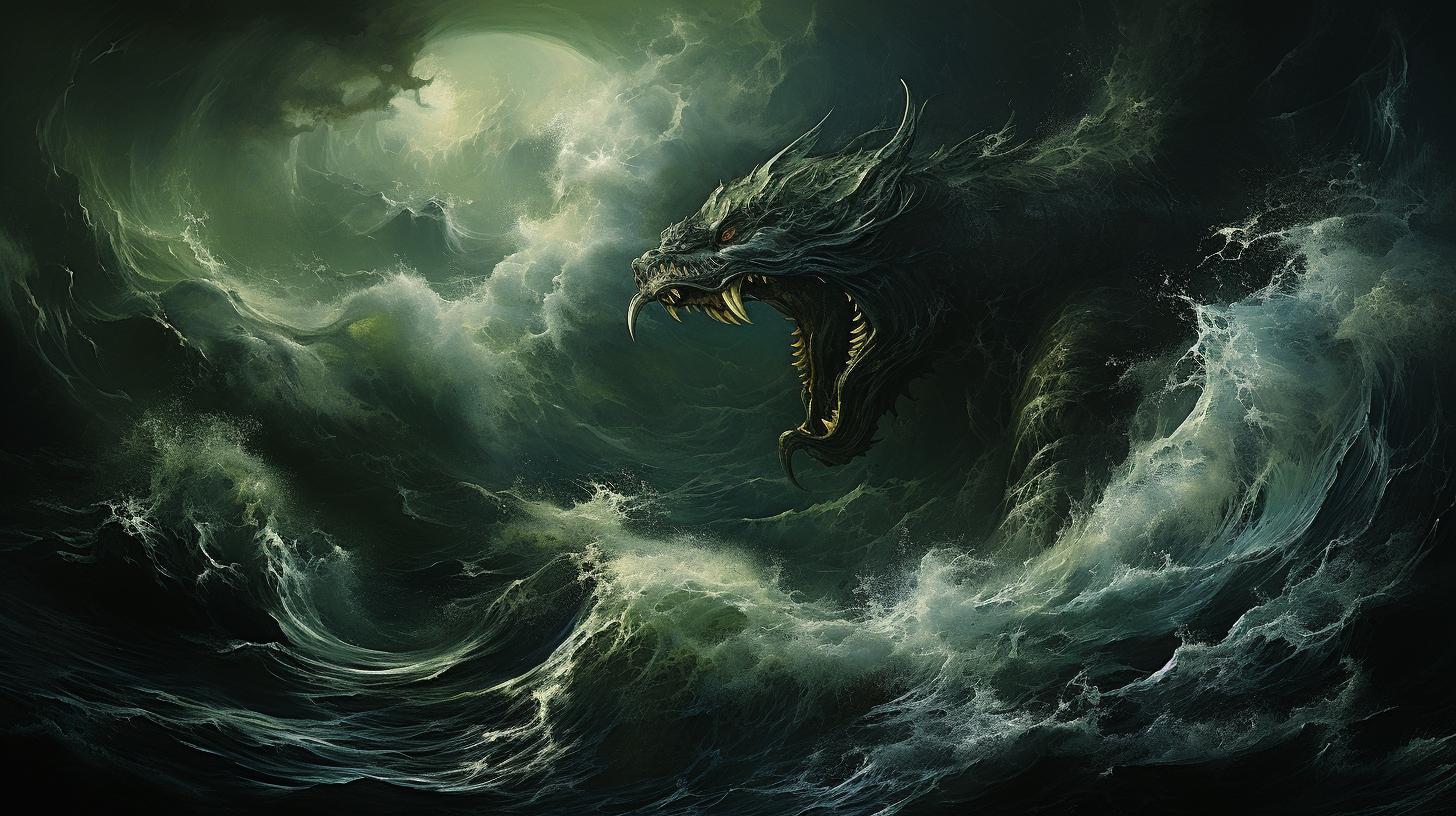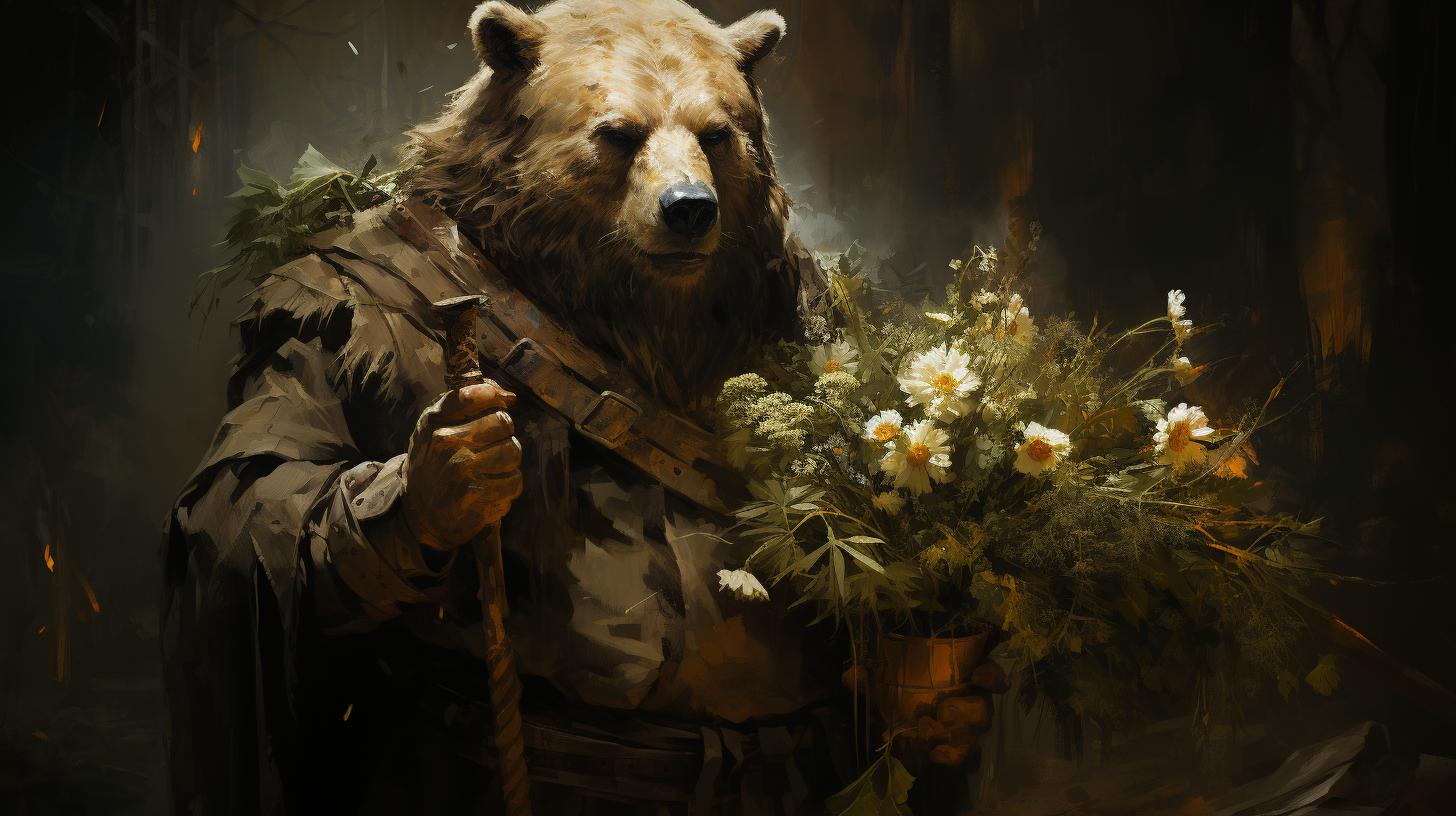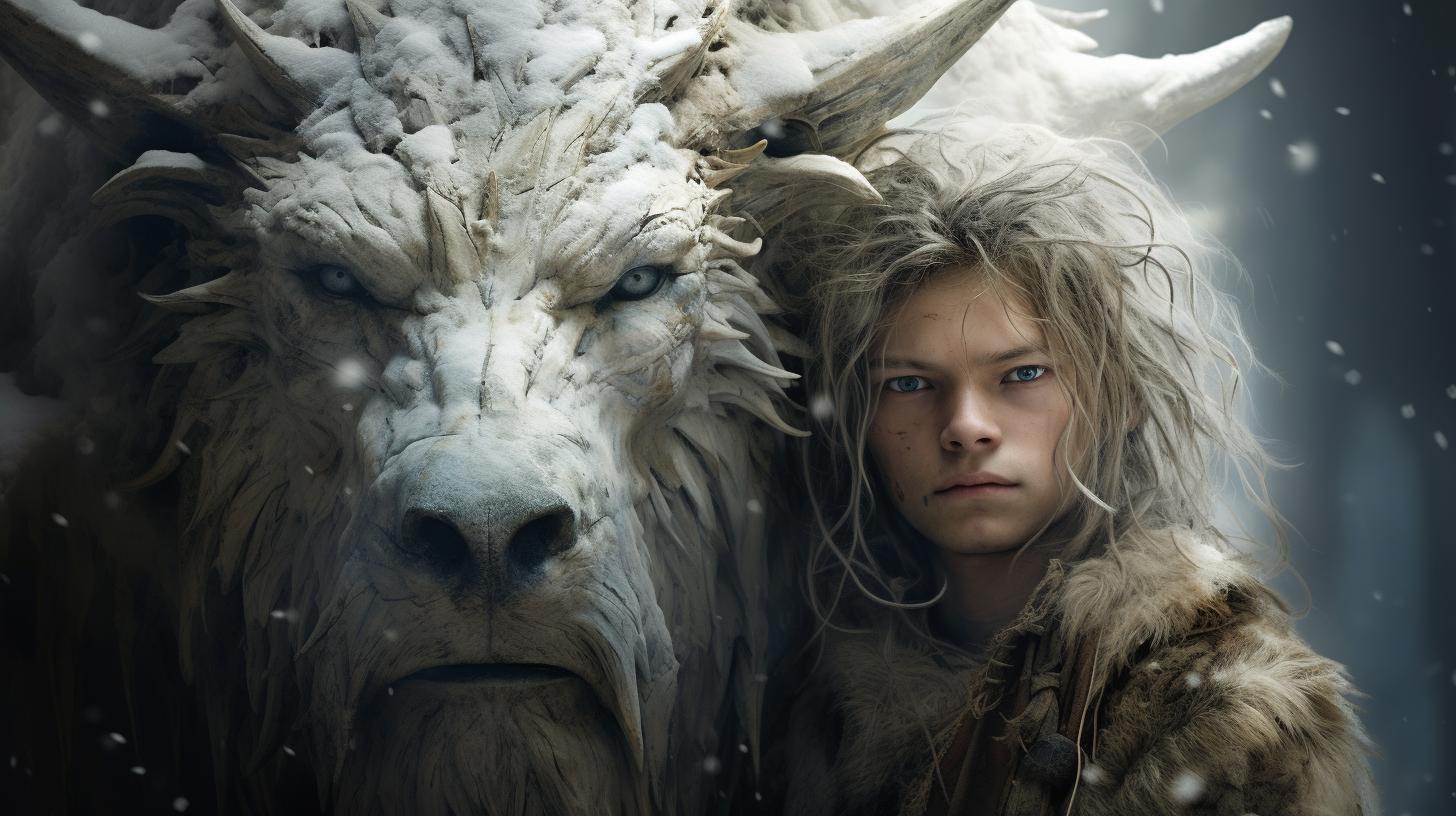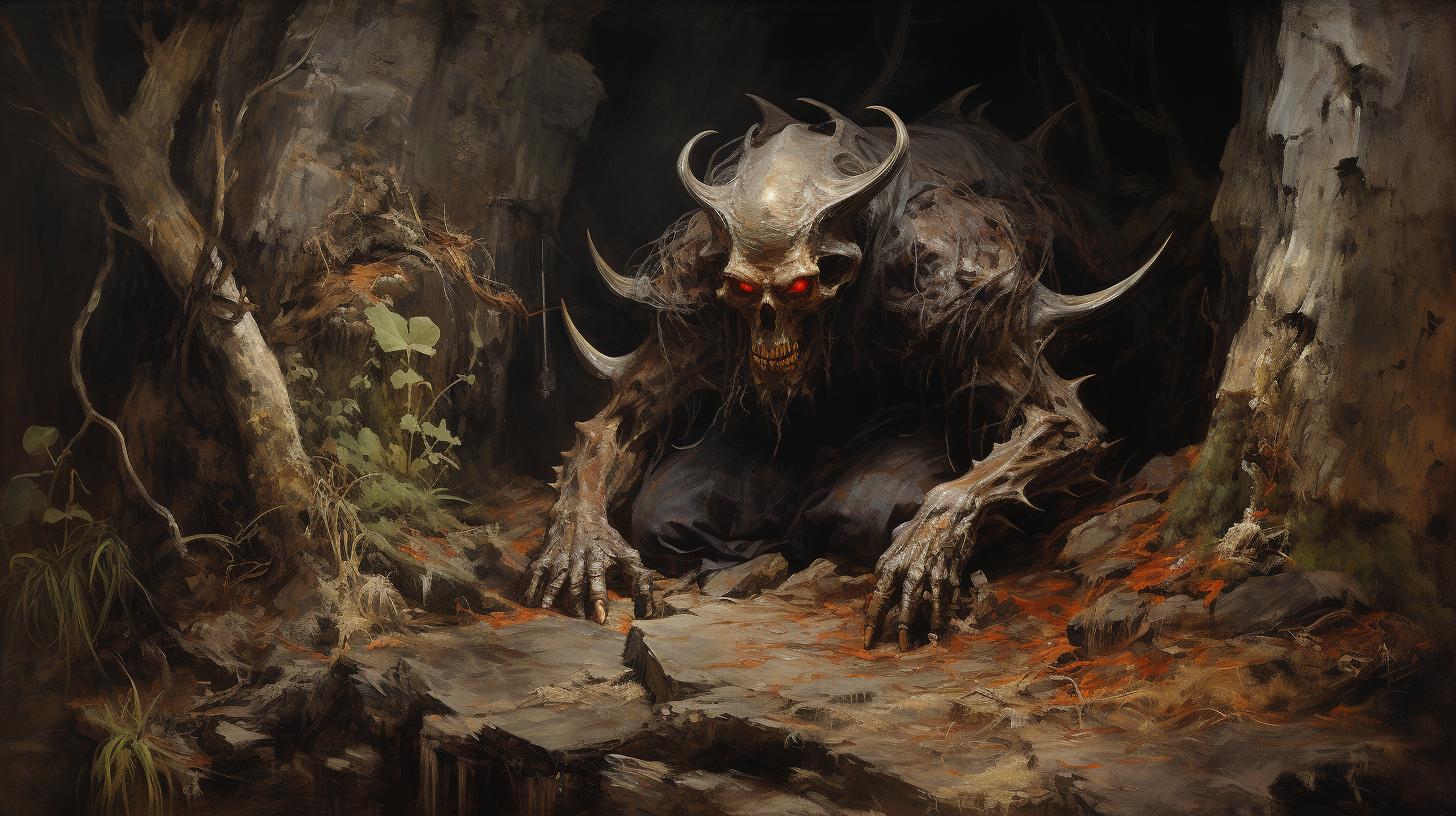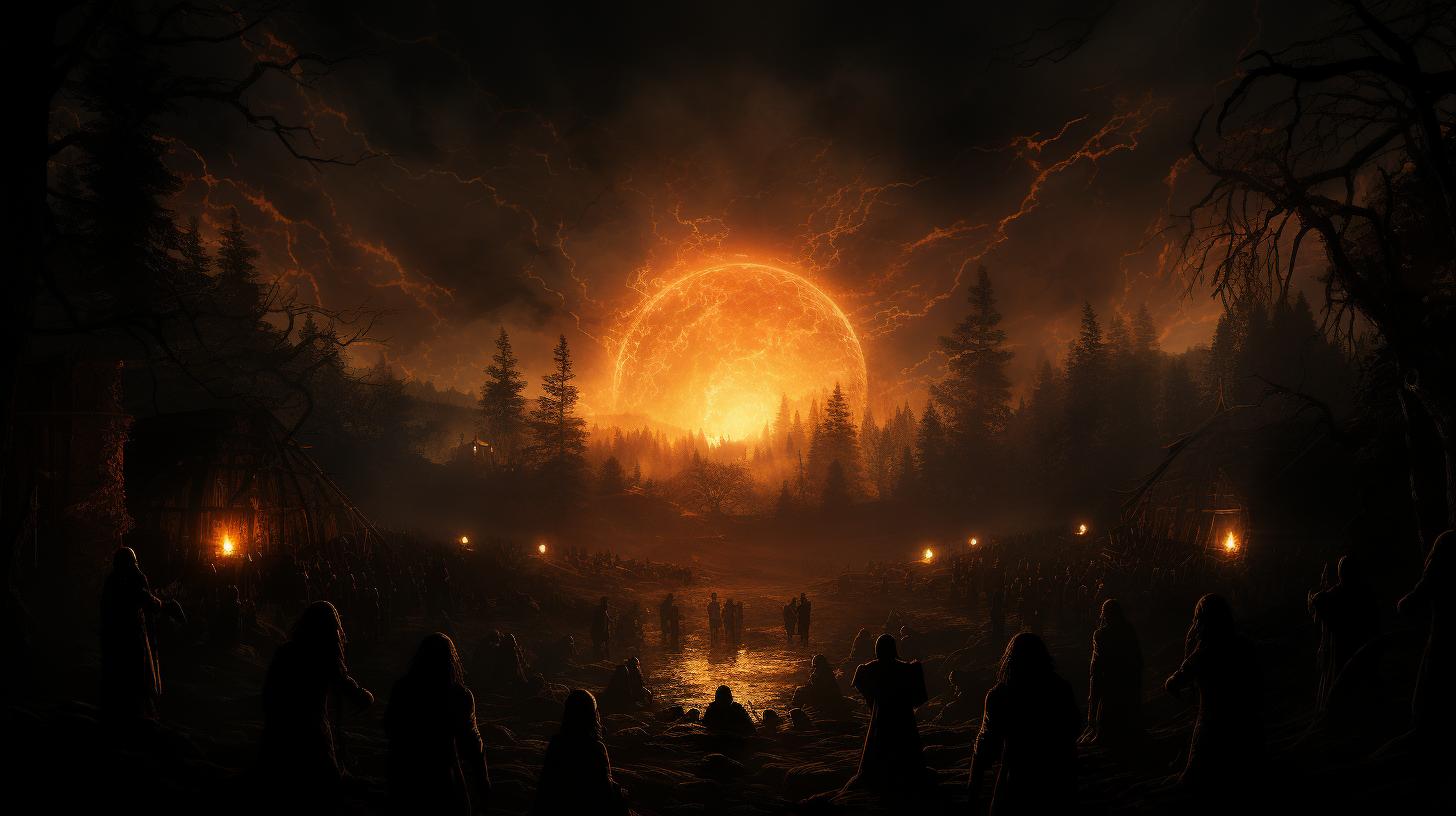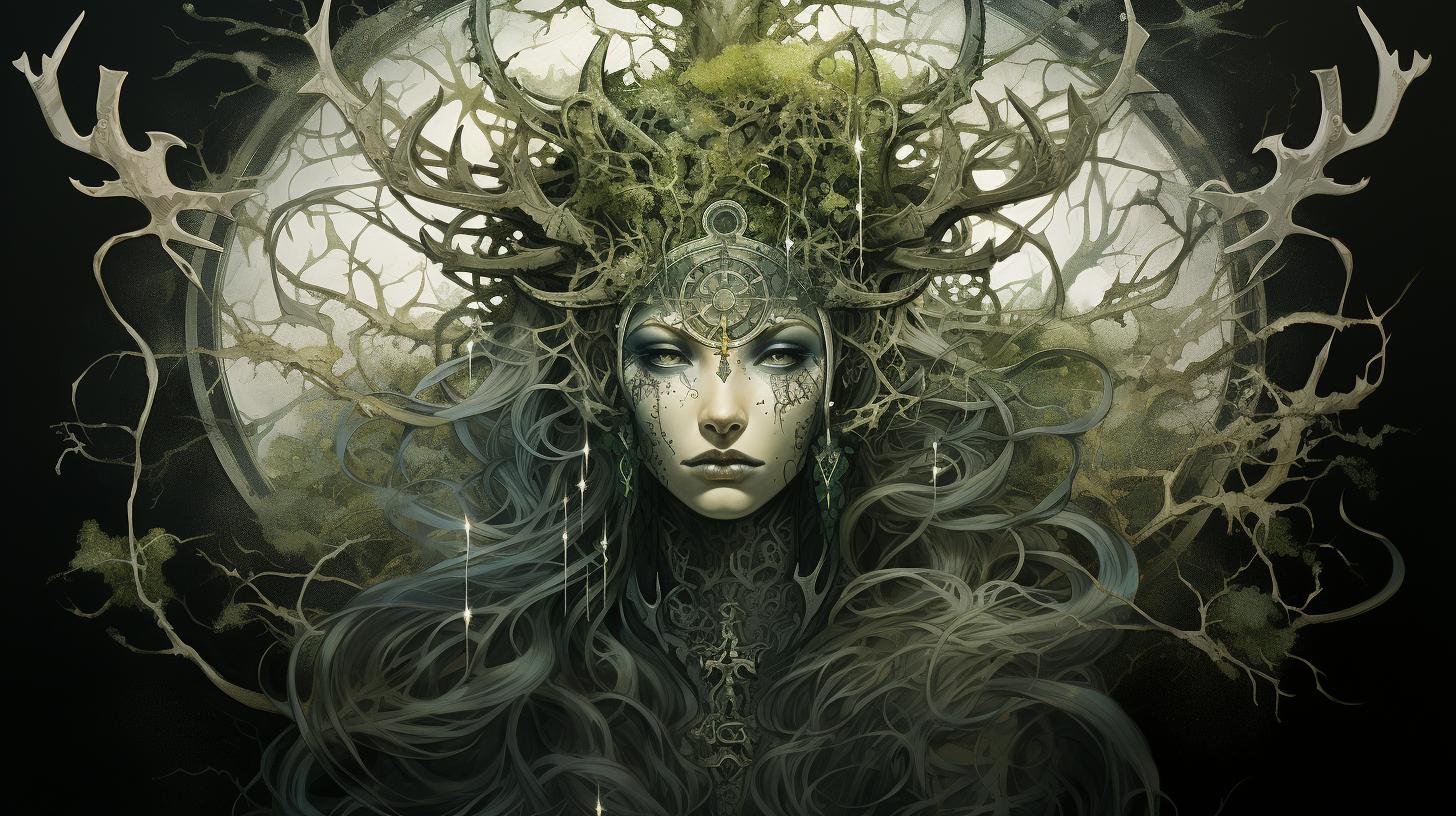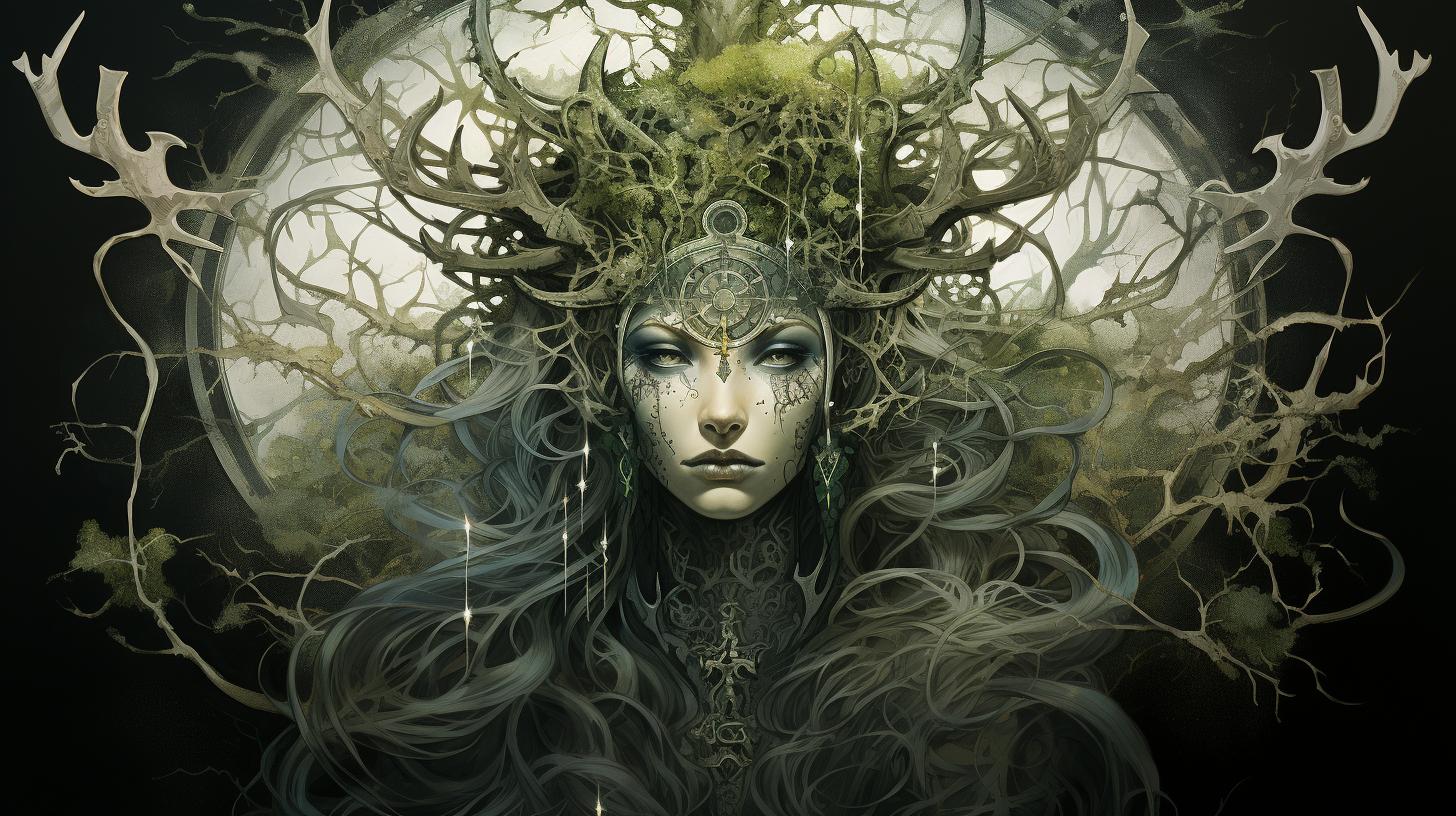Iku Turso: Exploring the Myths and Legends of Finnish Mythology
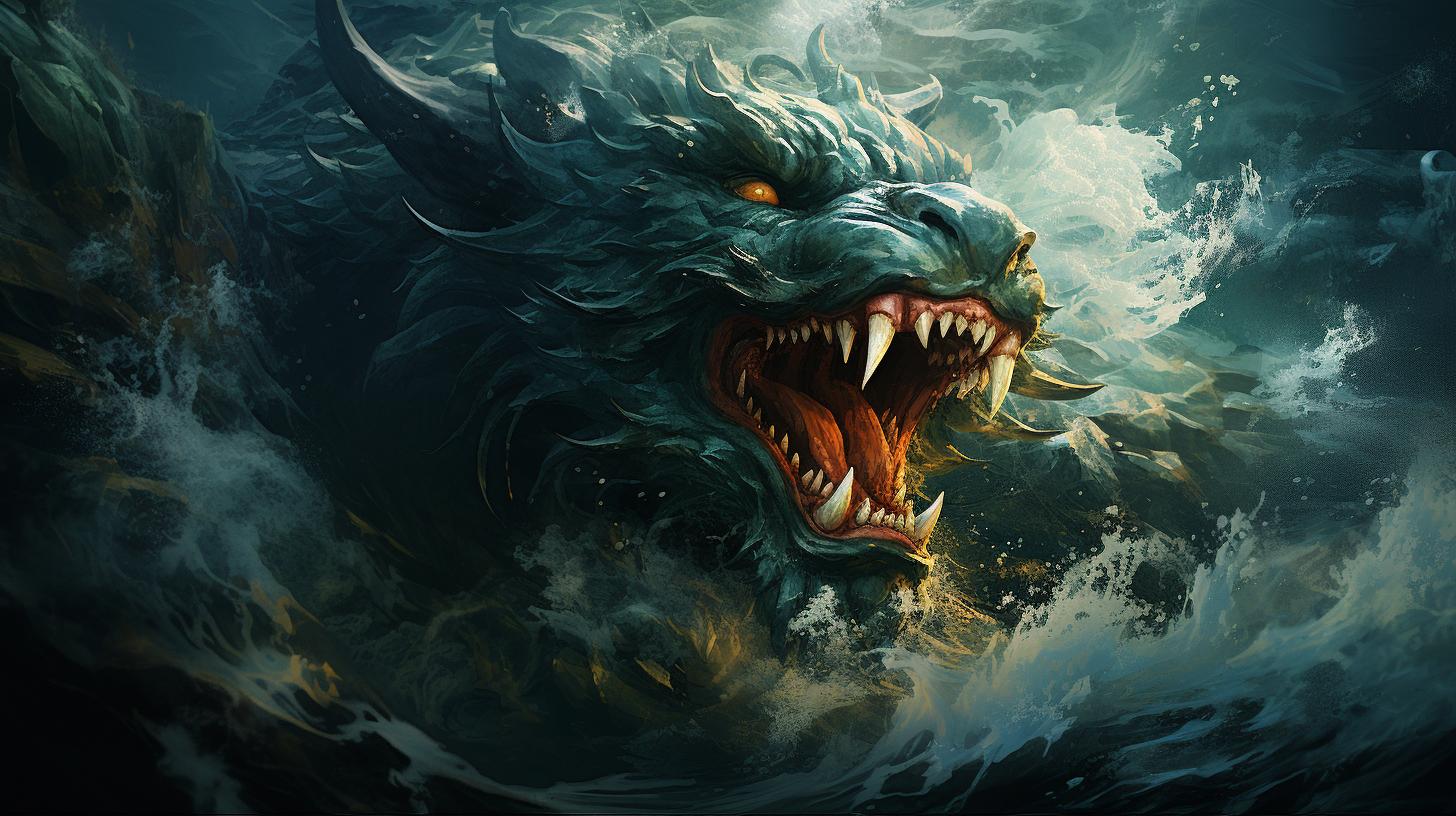
Iku Turso, the terrifying sea monster of Finnish mythology, has captivated the imaginations of many. With origins steeped in legend, this monstrous deity is known for its association with disease and its role as a harbinger of war and destruction.
In the epic poem Kalevala, Iku Turso is pitted against the hero Väinämöinen and his crew as they protect the mystical artifact known as the Sampo. Contemporary references to Iku Turso can be found in Finnish popular culture, including its influence on the metal band Turisas.
Explore the mysteries and controversies surrounding this captivating figure in Finnish mythology.
Iku Turso: The Terrifying Sea Monster
In Finnish mythology, Iku Turso is a fearsome sea monster that lurks in the depths of the ocean. This legendary creature is shrouded in mystery and has captured the imagination of many.
Let’s delve into the origins and legends of Iku Turso, as well as explore its significant role in Finnish mythology.
Origins and Legends of Iku Turso
The name Iku Turso derives from ‘tursas’, meaning walrus in Finnish, suggesting that the creature possesses certain characteristics resembling a walrus. It is often depicted as a monstrous being with a beard, living at the edge of the ocean.
According to various versions of the myth, Iku Turso is said to be the father of several diseases, which are unleashed upon humanity as punishment or chaos.
The Role of Iku Turso in Finnish Mythology
Iku Turso is associated with evil and serves as a god of war and a harbinger of pestilence.
It is believed to dwell in the depths of the northern waters, near a sinister and frozen land known as Pohjola. In the epic poem Kalevala, Iku Turso is summoned by the goddess Louhi to protect the mystical artifact called the Sampo.
However, it is ultimately defeated and banished to the depths of the sea by the semi-divine hero Väinämöinen and his crew, forbidding its return.
Throughout Finnish mythology, Iku Turso represents a powerful and menacing force, embodying the primal elements of the ocean and the dark side of human existence.
Its presence and significance in Finnish culture speak to the enduring fascination with ancient myths and the depths of the unknown.
Exploring the Mythological World of Kalevala
Embark on a journey into the captivating mythological world of Kalevala, where legends and heroes come alive. Within this ancient epic, the mythical creature Iku Turso takes center stage, enthralling readers with its ferocity and power.
Let’s delve into its significance and explore the connections it shares with the mystical artifact known as the Sampo.
Iku Turso in the Epic Poem Kalevala
In the epic poem Kalevala, Iku Turso emerges as a formidable force of chaos and conflict. Described as a terrifying sea monster, it locks horns with the hero Väinämöinen and his loyal crew in an epic battle for the possession of the Sampo.
Witness the clash between these iconic figures as they fight for control over this magical artifact, whose power holds immense importance in the mythological tapestry of Finland.
Iku Turso’s Connection to the Sampo
Beneath the tumultuous waves of Finnish mythology, Iku Turso’s association with the mystical Sampo adds another layer of intrigue.
The Sampo, often depicted as a magical mill, serves as a source of abundance, prosperity, and good fortune. Explore the intertwined fate of Iku Turso and the Sampo as you uncover the mysteries behind this enigmatic connection.
As you unravel the intricate webs spun by the ancient myths of Kalevala, the presence of Iku Turso leaves a lasting impression. From its epic battles to its link with the revered Sampo, this mythical creature weaves itself into the very fabric of Finnish folklore, captivating the imagination and sparking countless interpretations.
Iku Turso and the Dark Side of Finnish Mythology
Iku Turso, the terrifying sea monster in Finnish mythology, is associated with the darker aspects of the mythological world. This section delves deeper into Iku Turso’s role as the bringer of pestilence and its association with war and destruction.
Iku Turso as the Bringer of Pestilence
An ominous figure in Finnish folklore, Iku Turso is believed to wield the power to unleash various diseases upon humanity. In different versions of the myth, it is credited as the father of nine diseases or as the entity that impregnated the wind, leading to the birth of these ailments.
This association with illnesses adds a sinister dimension to Iku Turso’s character, embodying the concept of the dark side hidden beneath the ocean depths.
The Association of Iku Turso with War and Destruction
Iku Turso’s formidable presence extends beyond diseases.
It is considered a god of war and a harbinger of destruction. Legends depict Iku Turso dwelling in the northern depths of the sea, near the wretched and frozen land of Pohjola.
Its malevolent nature and connection to war conjure visions of chaos and devastation, implying that Iku Turso’s influence goes far beyond its role as a mere sea monster.
These associations with pestilence, war, and destruction position Iku Turso as a formidable and feared deity within Finnish mythology.
Its presence is a reminder of the ancient world’s recognition of the forces of darkness and the fragile equilibrium that exists between good and evil in mythological realms.
Iku Turso: The Father of Diseases
Iku Turso, the terrifying sea monster of Finnish mythology, is not only associated with war and destruction but also holds the title of “the father of diseases.”
According to various versions of the myth, Iku Turso is credited as the progenitor of several afflictions unleashed upon humanity.
Different Versions of Iku Turso’s Role in Spreading Diseases
Within Finnish folklore, two distinct narratives exist regarding Iku Turso’s role in propagating diseases. In one version, he is described as the father of the nine diseases that afflict humanity. Each ailment is believed to have originated from his malevolent influence, spreading misery and suffering across the land.
However, an alternative version suggests a slightly different origin for these diseases. According to this variation, Iku Turso himself did not directly father the afflictions. Instead, it is believed that the wind impregnated the mother of these diseases, resulting in their birth and dissemination.
Iku Turso’s Relationship with Tuoni, the God of Death
Iku Turso’s association with disease and death is further deepened through his relationship with Tuoni, the god of death in Finnish mythology. Together, they form a menacing alliance that embodies the somber aspects of existence.
While the exact nature of their connection varies across different tales, it is commonly believed that Iku Turso acts as a harbinger of death, ushering souls into the realm of Tuoni. This relationship highlights the fearsome power and influence Iku Turso wields over mortality and the human condition.
As the father of diseases and a force of destruction, Iku Turso represents a formidable presence in Finnish mythology. His involvement in spreading ailments and his affiliation with Tuoni create a menacing mythology that highlights the darker aspects of the human experience.
Contemporary References to Iku Turso
Iku Turso, the legendary sea monster in Finnish mythology, continues to captivate modern audiences and has made its way into various aspects of Finnish popular culture. From music to literature, Iku Turso’s influence can be seen in different forms.
Iku Turso in Finnish Popular Culture
Iku Turso’s terrifying persona has cemented its place in Finnish popular culture. The sea monster has appeared in numerous books, comics, and graphic novels, often as an antagonist or a symbol of malevolence.
Its frightening visage and mythical origins have become a source of inspiration for many Finnish artists and storytellers.
Furthermore, Iku Turso’s presence extends to Finnish cinema and television. It has made appearances in fantasy and horror films, adding to its reputation as a fearsome creature.
These portrayals have contributed to keeping the legends of Iku Turso alive among new generations.
Iku Turso’s Influence on the Finnish Metal Band Turisas
The tales of Iku Turso have not only seeped into literature and visual arts but have also found their way into Finnish music. One notable example is the Finnish metal band Turisas, named after the sea monster itself.
Known for their epic and folk-inspired sound, Turisas often incorporates themes from Finnish mythology into their music.
In several of their songs, Turisas delves into the world of Iku Turso, exploring its menacing power and the darkness associated with it.
Their lyrics bring forth vivid imagery of battles, storms, and mythical creatures, creating a musical experience that is deeply rooted in Finnish folklore.
Through their music, Turisas keeps the spirit of Iku Turso alive, showcasing the enduring fascination with Finnish mythology in contemporary society.
- Finnish artists and storytellers continue to draw inspiration from Iku Turso, featuring the sea monster in various forms of visual arts, such as books, comics, and graphic novels.
- Iku Turso’s terrifying persona has also made its way into Finnish cinema and television, appearing in fantasy and horror films to further ingrain its fearful reputation.
- The Finnish metal band Turisas, named after the sea monster, incorporates themes from Finnish mythology, including Iku Turso, in their epic and folk-inspired music.
- Turisas’s lyrics evoke imagery of battles, storms, and mythical creatures, creating a musical experience deeply rooted in Finnish folklore.











